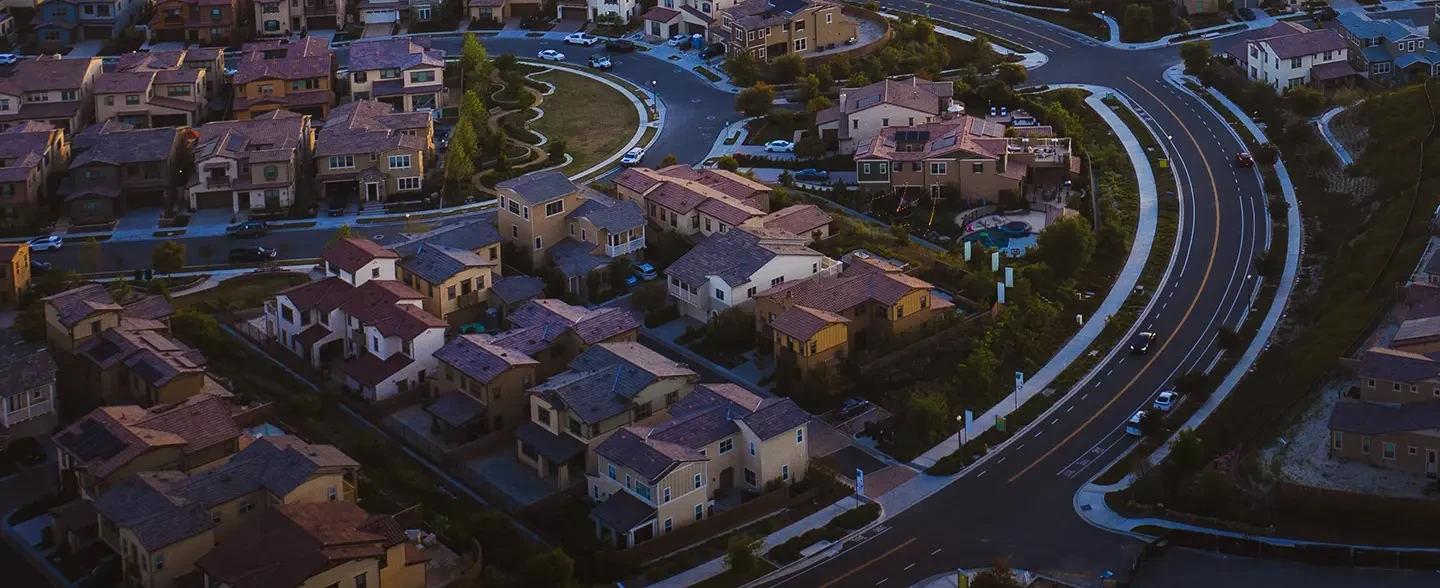Homeowners associations (HOAs) are designed to maintain uniformity and aesthetic standards within a community, often by enforcing strict architectural guidelines. If you’re a homeowner in California, understanding the HOA architectural review process is crucial, especially if you want to make exterior modifications to your property.
This article outlines your rights and responsibilities under California law, what to do if your HOA denies your request, and how LS Carlson Law can help you navigate these challenges effectively.
Understanding HOA Architectural Review in California
HOAs use architectural review processes to maintain the visual appeal and property values of a community. These processes ensure that any changes to the exterior of homes, such as paint colors, landscaping, or structural modifications, align with the community's governing documents, including architectural guidelines and aesthetic standards. However, homeowners may encounter challenges when their proposed changes are denied or delayed.
In California, the HOA is typically responsible for enforcing these rules through an Architectural Review Committee or Board of Directors. If you are thinking about making modifications to your property, you will likely need to submit an architectural application and go through the HOA’s approval process. California law, specifically the Davis-Stirling Act, ensures that HOA governing documents and architectural review processes comply with state regulations. The law also mandates that HOA boards and committees follow certain timelines and procedures in reviewing and approving architectural requests.
Key Legal Protections for Homeowners
California provides several protections for homeowners when it comes to HOA architectural reviews. Among these protections are clear timelines and the right to challenge HOA architectural denials if the rules aren’t followed properly. The HOA is required to act within a reasonable amount of time, typically within 30 to 45 days, to approve or deny a modification request. Failure to do so may lead to legal remedies available to homeowners.
Under the California Civil Code, an HOA must also follow established procedures in reviewing requests. The guidelines must be reasonable, fair, and not overly restrictive. In some cases, homeowners have the right to challenge an architectural denial, particularly if it’s seen as arbitrary or not in line with the community’s aesthetic standards or zoning laws.
Moreover, some laws, such as the Solar Rights Act, protect homeowners who wish to install solar panels. This law limits how an HOA can restrict solar energy systems, ensuring that homeowners can access the benefits of renewable energy without excessive interference from the HOA’s architectural review process.
Common HOA Architectural Guidelines
HOAs typically enforce architectural guidelines that regulate exterior modifications, such as:
Paint Colors: Some communities have specific rules regarding the colors homeowners can use for the exterior of their homes. These guidelines often aim to maintain visual harmony and consistency throughout the neighborhood.
Landscaping: Landscaping modifications, such as the installation of fences, plants, or trees, often require HOA approval to ensure the aesthetic integrity of the community is preserved.
Additions and Structural Changes: Building a new structure, adding a deck, or making any significant changes to the home's exterior typically requires approval. This is to ensure that the changes align with the HOA’s architectural standards and do not negatively impact the overall appearance of the community.
These guidelines are generally designed to balance the interests of individual homeowners with the need for a cohesive community. However, there are limits to what an HOA can enforce. Any guidelines that are unreasonable or overly restrictive could potentially be challenged.
The HOA Architectural Approval Timeline
Once a homeowner submits an architectural request, the HOA must respond within a reasonable timeframe. According to the Davis-Stirling Act, an HOA has up to 45 days to approve or deny a request. If an HOA fails to respond within this time frame, the request is automatically deemed approved, unless the request violates established rules or regulations.
However, it's important to understand that an HOA may not always adhere to this timeline. If your request is delayed, you may be entitled to seek legal action or use alternative dispute resolution methods.
Challenging an HOA Architectural Denial
If your HOA denies an architectural modification request, you may not be without options. California law provides homeowners with several methods to challenge the denial:
Request a Formal Review: Homeowners can ask for a formal review or appeal of the decision by the Architectural Review Committee or HOA Board.
Mediation and Dispute Resolution: The Davis-Stirling Act encourages dispute resolution through mediation or other informal means before resorting to litigation. This is often the quickest and most cost-effective way to resolve a disagreement.
Legal Action: If the dispute cannot be resolved through mediation or negotiation, homeowners may pursue legal action. This could include challenging the HOA’s decision in court, especially if the denial was unreasonable or violated the homeowner’s legal rights, such as those protected by the Fair Employment and Housing Act or the Solar Rights Act.
Solar Panel Rights in California HOAs
One of the most significant areas where homeowners often face challenges is the installation of solar panels. California’s Solar Rights Act protects homeowners by limiting the ability of an HOA to prohibit the installation of solar energy systems. While HOAs can place reasonable restrictions on the placement of solar panels to ensure safety and aesthetics, they cannot outright ban them.
Homeowners wishing to install solar panels must still go through the HOA’s architectural review process. However, the HOA’s denial of a solar panel request must be based on reasonable grounds such as safety concerns or structural integrity, not aesthetic preferences alone.
Reasonable Architectural Controls and Aesthetic Standards
While HOAs have the right to enforce reasonable architectural controls to preserve the aesthetic harmony of the community, these rules must be clear, consistent, and uniformly enforced. An HOA cannot impose arbitrary or discriminatory restrictions on homeowners’ property modifications.
California law requires that HOA guidelines not be overly restrictive and that they must be applied equally to all homeowners. In cases where the architectural review process is being enforced too strictly or inconsistently, homeowners have the right to challenge the HOA’s actions.
How LS Carlson Law Can Help
Navigating the complex world of HOA architectural reviews can be challenging. At LS Carlson Law, we specialize in helping homeowners protect their rights in HOA disputes. Whether you're facing an unreasonable denial, need help understanding architectural guidelines, or need assistance with legal action, our experienced attorneys are here to guide you every step of the way.
Contact us today to schedule a consultation and learn how we can help you ensure your HOA is adhering to California’s legal standards. Let us assist you in making sure your architectural requests are handled properly and that your rights as a homeowner are protected.

Tell Us About Your HOA Dispute
When you hire LS Carlson Law, you can be assured you’ll be getting an aggressive firm fully dedicated to achieving your legal objectives. Don’t take our word for it, we encourage you to take a look at the numerous five-star client reviews. Call us now or fill out the form to set an appointment.



